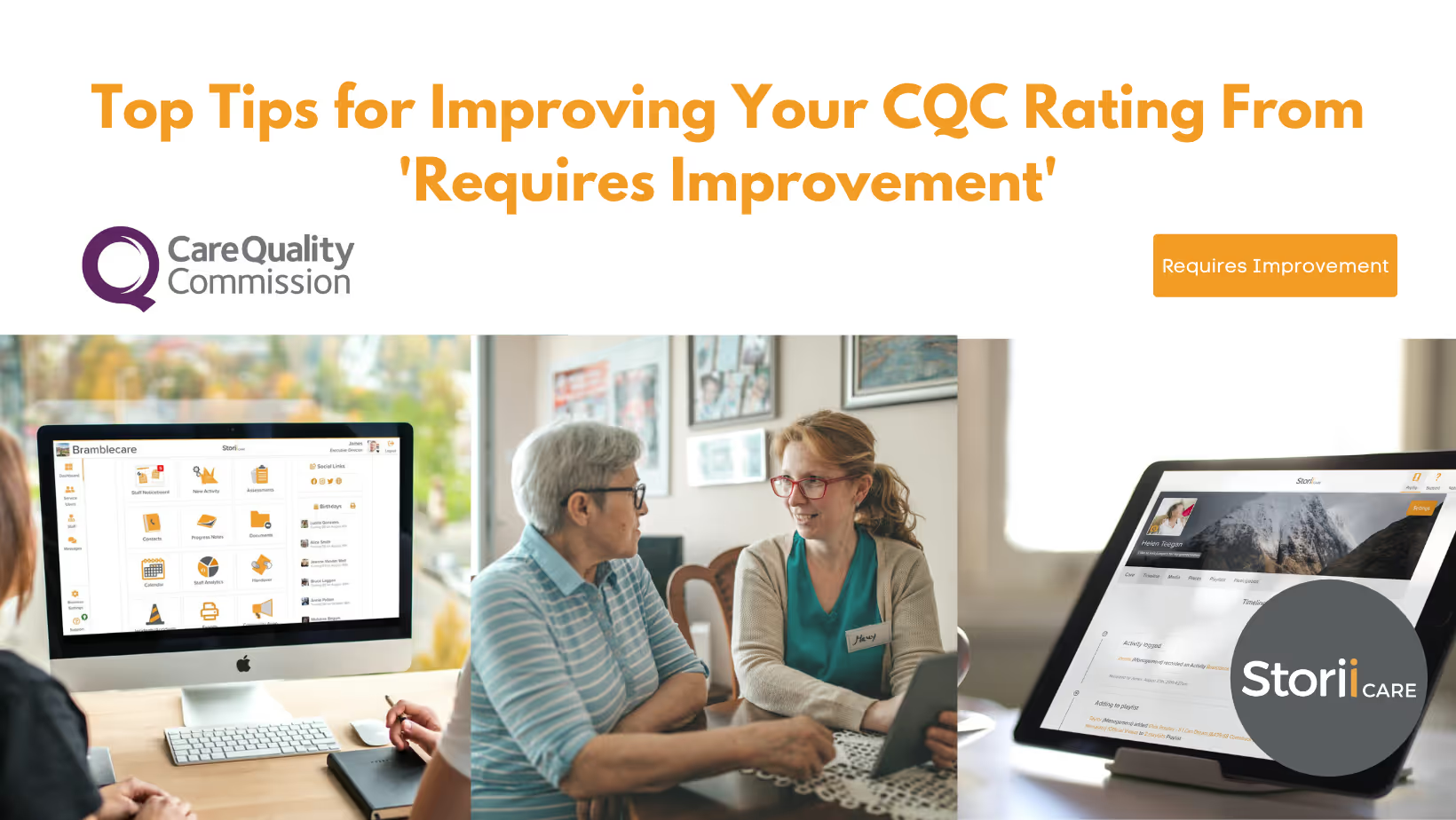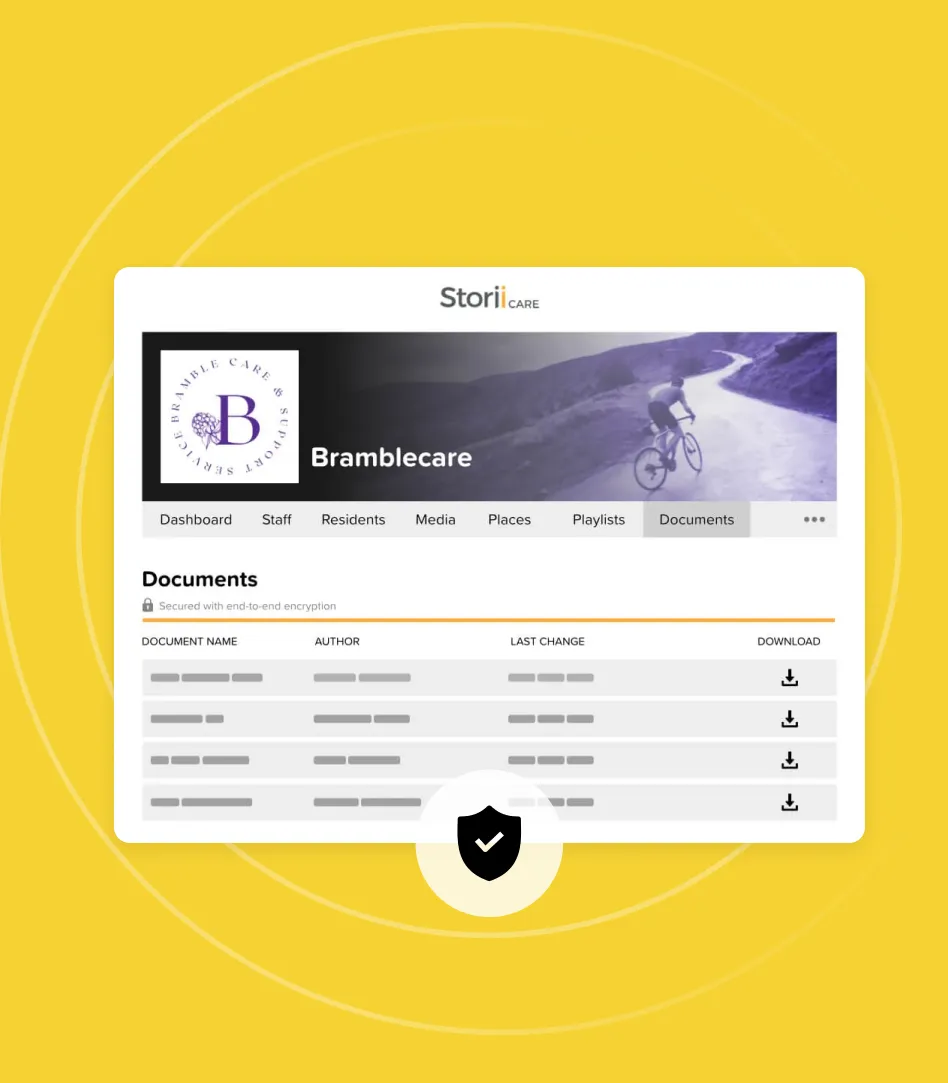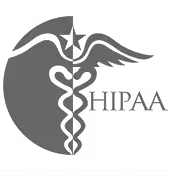No care provider wants to receive a rating of ‘requires improvement’ from their CQC inspection. It only takes two or more key questions to be rated ‘requires improvement’ for the overall rating to be ‘requires improvement’. Therefore, it is important not to grow too discouraged. Adult social care services are experiencing a staffing crisis and reeling from the impacts of the COVID pandemic. While it is disappointing to be awarded this rating, everyone is under immense pressure and many providers are simply doing the best they can with dwindling resources and overworked staff.
To your benefit, the regulatory body’s Key Lines of Enquiry (KLOEs) framework clearly outlines their expectations. Therefore, it is easy to see from the CQC report which key areas need work and what the inspector’s recommendations are. From there, you can identify the ways in which you can improve and obtain a higher rating during your next inspection.
Instant Barriers to Achieving a ‘Good’ or ‘Outstanding’ Rating
There are some situations where, despite how outstanding and well-led your care may be, you will automatically be awarded a ‘requires improvement’ rating. This happens whenever there is a breach of CQC regulations present. Examples of breaches could include:
- Not having a registered manager hired
- Not returning PIR information where requested
- Statutory notifications not being submitted
Additionally, if you are a brand new service or one that has been recently reconfigured (i.e. taken over by another company), chances are you will be inspected but not rated. The CQC may delay or suspend a rating if they identify any concerns that require re-inspection/investigation or re-consideration of a previous rating.
Why Would a Provider Receive a ‘Requires Improvement’ Rating From the CQC?
There are five KLOEs (Safe, Effective, Responsive, Caring, Well-Led) that the CQC uses to measure the overall rating of a service. Most providers receive satisfactory ratings for Caring and Effective. The most common ones to see room for improvement are Safe, Responsive, and Well-Led.
What leads to a ‘requires improvement’ rating? Here are some examples of inspectorate comments on real CQC reports to showcase where this rating was awarded.
Safe
"The registered provider needed to make improvements to the cleanliness of the service. Audits monitoring the cleanliness of the service had not always been carried out and had not identified the issues we found."
"We observed two occurrences of staff moving people in a wheelchair without using footplates. Using wheelchairs in this way increases the risk of people sustaining an injury."
"There were no PRN protocols in place to guide staff on the circumstances when the medication should be offered and administered."
Effective
"People's bedroom doors were locked and alarmed; and when opened emitted a loud high-pitched sound which could be heard throughout the premises. No information was recorded to suggest that people using the service had been consulted and given their consent to this arrangement. The rationale for this use of restrictive intervention was not recorded to evidence this was in peoples' best interest. This did not support people's right to privacy and dignity and suggested people's liberty was being deprived."
Caring
"There were occasions when we saw people were not always supported in a way that recognised their emotional needs. For example, we saw one person sitting near the staff desk on one of the units. They were expressing confusion about the time of day and when a relative might be visiting. Although a staff member was sat at the desk, they were not responding to or engaging with the person."
"We found that information about people's culture and sexuality sometimes lacked detail, such as one person who followed a particular faith and their care plan lacked detail on the support staff would need to give them to enable them to do so."
Responsive
"Activities on offer to people were routine and did not focus on people's preferences and abilities. An Activities Coordinator was hired but only on site a few hours each week."
"People's end of life care needs were not recorded."
Well-led
"Some areas of the office had CCTV. They had failed to notify us that covert surveillance was being carried out in this area. CCTV Signs were not on display in this area."
"Infection prevention control audits had not identified that there’d been shared equipment between people who had been identified with COVID-19 and people who were negative for COVID-19. There were no cleaning schedules in place for equipment or for frequently used areas of the service."
Top Tips for Improving Your CQC Rating
- Go through your previous/recent CQC reports and make a list of every negative comment. Next to each, write down or type up an action plan for what steps you will take to improve in this area. Remember to make those steps SMART.
- Documentation is everything. Make sure you have strict documentation protocols in place and that staff are aware of best practices regarding all types of records and assessments. All documentation needs to be clear and highly accurate in case anything should go wrong. Consider moving to a digital care management system if you haven’t already.
- Managers should regularly check that risk assessments are in place and protocol is being followed. Erroneous, misplaced, or risk assessments that don’t include follow-up actions and learnings can bring down your rating.
- Ensure there is a thorough process for investigating complaints, concerns, accidents, and incidents. These must be reported to the CQC. Steps taken to investigate and learn lessons to prevent recurrences should be documented.
- Review all mandatory training requirements and identify which staff need to take additional courses. Create a schedule for all staff to attend on an ongoing and as needed basis
- Check out this CQC guidance on good medicines management and ensure staff have up-to-date training in this area.
- Make sure staff have up-to-date training on the Mental Capacity Act, which is evolving and changing. Issues regarding resident consent and dignity are examined closely.
- Ensure care plans are person-centred and not simply task-based. Electronic care plans can ensure compliance with this as they can be more easily personalised and shared with the resident’s care circle.
- With staffing shortages, it may be tempting to get anyone in the door to help relieve pressure. However, it is vital that you practice thorough vetting and verification of all applicants. Inspectors will watch staff closely. It is important that you seek references from past employers, DBS certificates, etc. and that you’re following a values-based recruitment strategy. Interview questions should be tailored to place importance on the values and behaviours of applicants.
StoriiCare Can Help
Our platform is well-suited to help care homes and social care providers achieve ‘good’ and ‘outstanding’ ratings. The StoriiCare team has developed our care management system alongside health and social care professionals across the globe, ensuring a high-level of quality assurance and best practice. StoriiCare comes with customisable features so that you can remain person-centred and tailor the system to best suit your needs.
Our Form Builder allows you to create custom forms and assessments that staff can complete on the system. These records are automatically stored against your resident and can be shared with staff, inspectors, and families. Sharing any and all relevant data with inspectors during audits has never been easier.
Want to find out more? Schedule a demonstration today.




.png)
.png)
.png)










